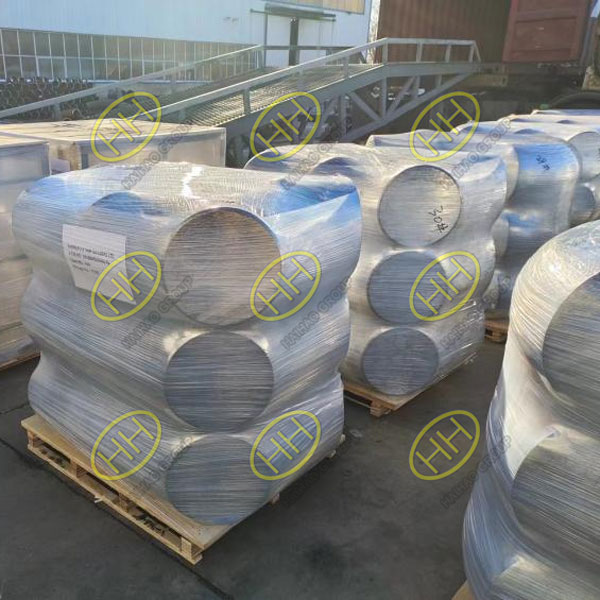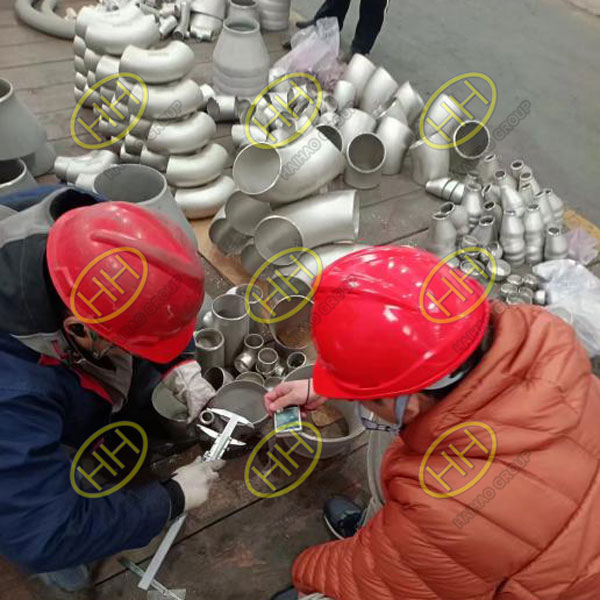Haihao Group’s commitment to pipeline product production and quality inspection
Haihao Group takes pride in its commitment to both the production process and quality inspection, recognizing the critical role they play in delivering top-notch pipe fittings. Understanding and strictly adhering to testing methods, we ensure the highest standards in our products.
Weld inspection for elbows: Inspecting the welds on elbows is a crucial measure to guarantee welding quality. Any defects not meeting technical requirements must undergo prompt rectification, and in severe cases where rectification is not feasible, the component is discarded. Following the completion of elbow welding, the weld seams undergo comprehensive inspection based on technical specifications. Common inspections for welding quality encompass three main aspects: visual inspection, non-destructive testing (NDT), and mechanical performance testing.
Visual inspection for elbows:
Primarily conducted through naked-eye observation, visual inspection reveals surface defects in the weld seam of elbow fittings.
Defects such as undercut, gas porosity, weld beads, surface cracks, slag inclusion, and weld penetration are identified.
The shape and size of the weld seam are measured using a weld groove tester or a template.
Non-destructive testing (NDT) for elbows:
NDT is employed to detect internal defects like slag, gas porosity, or cracks within the weld seam.
The commonly used method is X-ray inspection, utilizing X-rays to photograph the weld seam. The resulting images on the film determine the presence, extent, and type of defects.
Other methods include ultrasonic testing and magnetic particle inspection. Ultrasonic testing is more convenient than X-ray inspection and has widespread applications.
NDT is vital for evaluating whether the weld seams meet the product’s technical requirements.
Mechanical performance testing for elbows: While NDT identifies internal defects, it doesn’t provide insights into the mechanical performance of the metal in the heat-affected zone of the weld. Therefore, mechanical testing, including tension, impact, and bending tests, is conducted. These tests are performed on test plates, ideally welded together with longitudinal seams of cylinders to ensure consistent construction conditions.
Hydrostatic and pneumatic tests for elbows: For pressure vessels requiring sealing integrity, water and/or air tests are conducted. These tests evaluate the sealing and pressure-bearing capabilities of the weld seam. The vessel is filled with clean water or air (often using compressed air) at 1.25-1.5 times the working pressure, maintained for a specific duration, and then observed for pressure drop. External observations check for any signs of leakage, and based on these observations, the weld seam’s acceptability is determined.
Haihao Group’s dedication to comprehensive testing at every stage reflects our unwavering commitment to delivering pipe fittings that meet and exceed industry expectations. With a thorough understanding of testing methodologies and stringent implementation, we assure our customers of products that adhere to the highest quality standards.


